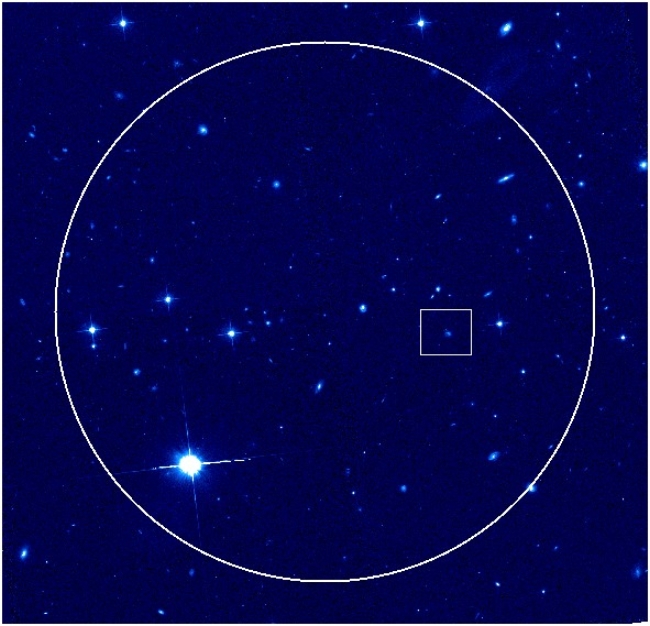
 Credit: Derek Fox/Penn State University
Credit: Derek Fox/Penn State University
Unraveling the Short-Burst Mystery
Look fast or it's gone. Gamma-ray bursts come in two types: long bursts (which last minutes) and short bursts (which last seconds). There have been a number of key advances in our understanding of long bursts, but short bursts (because they are so short) present much more of a challenge.
But NASA's HETE satellite has proved itself up to this challenge. On July 9, 2005, a short burst was localized by the HETE Gamma-ray burst satellite. The position was quickly relayed to a team led by Dr. Derek Fox of Penn State, who identified the X-ray afterglow in an image of the burst region obtained by the Chandra X-ray observatory. This observation, along with images of the optical afterglow obtained at the Danish 1.5m telescope at the European Southern Observatory, La Silla by a team led by Prof. Jens Hjorth of the University of Copenhagen, and images from the Hubble Space Telecope obtained by Fox's team, along with other ground based observations, allowed astronomers to identify the type of object which exploded. The image above shows the HST image of the region around the burst. The circle shows the burst region as determined by HETE, while the small box shows the location of the X-ray and optical afterglows. Thanks to the quick response of these astronomers to this burst, and the analysis of a previous short burst seen by the Swift satellite, scientists now have confirmed that these short bursts arise from the merger of two neutron stars. Raise your hand if you felt the gravitational radiation.
Last Week *
HEA Dictionary * Archive
* Search HEAPOW
* Education
Each week the HEASARC
brings you new, exciting and beautiful images from X-ray and Gamma ray
astronomy. Check back each week and be sure to check out the HEAPOW archive!
Page Author: Dr. Michael F. Corcoran
Last modified Tuesday, 27-Feb-2024 10:15:14 EST


